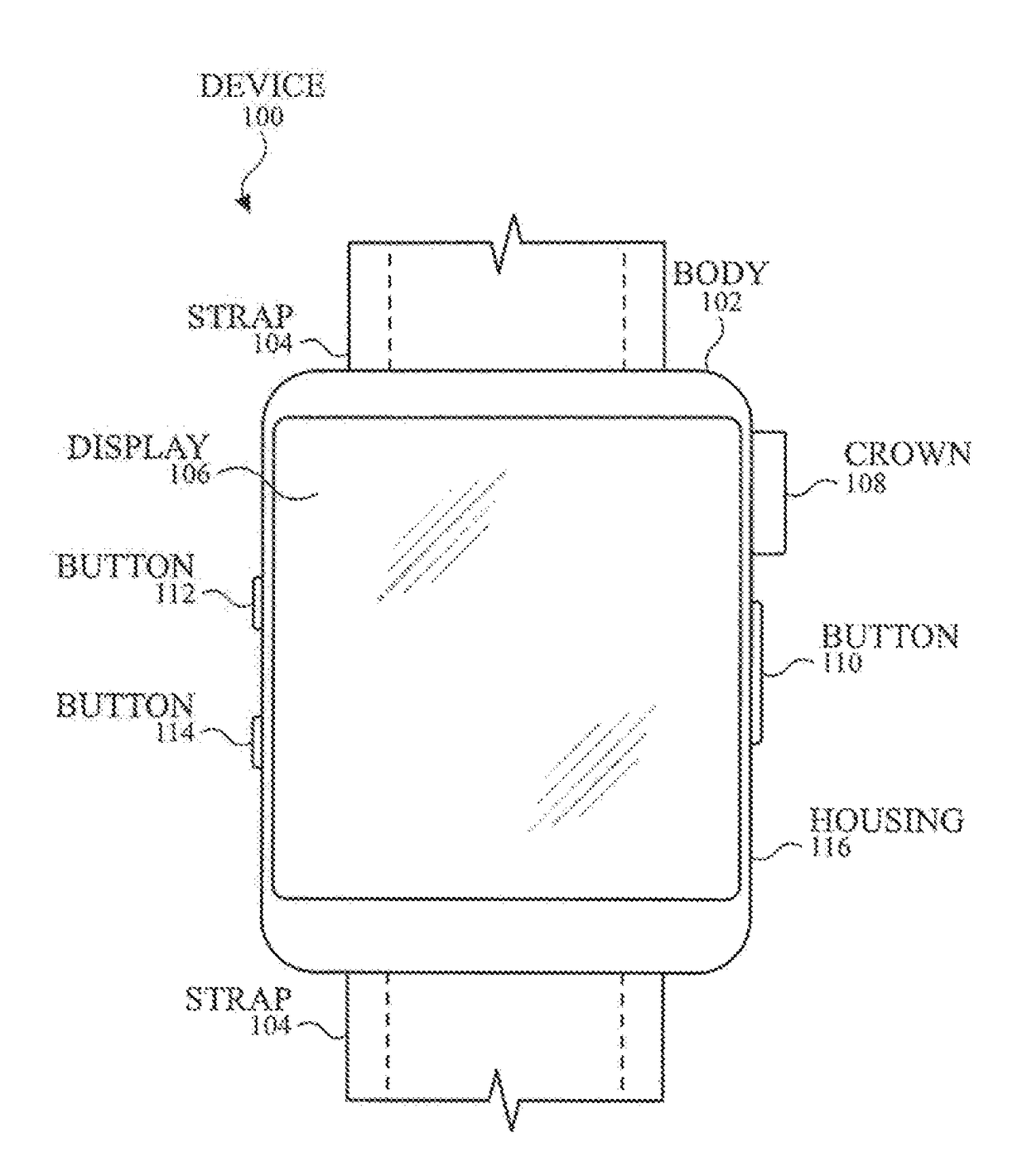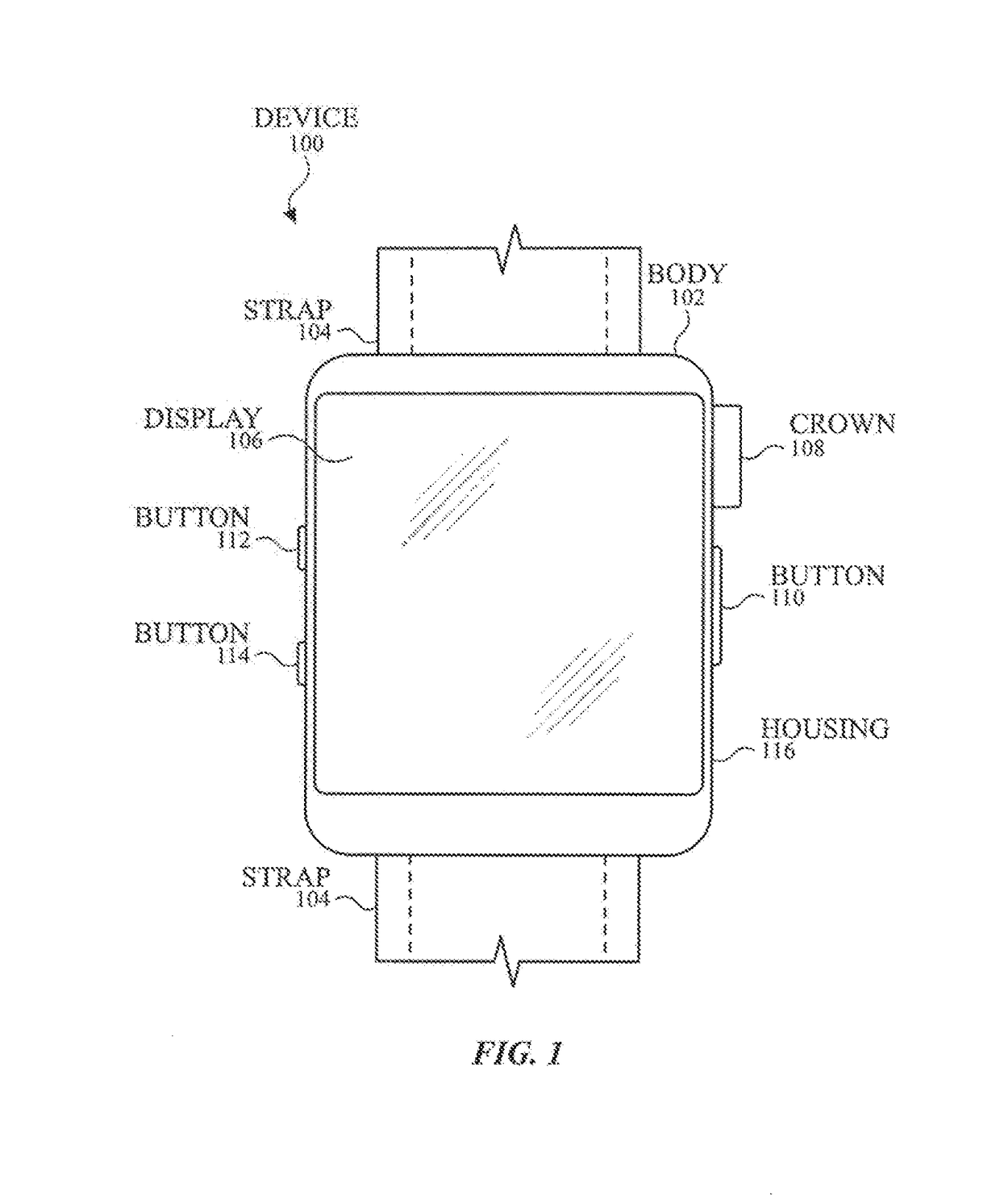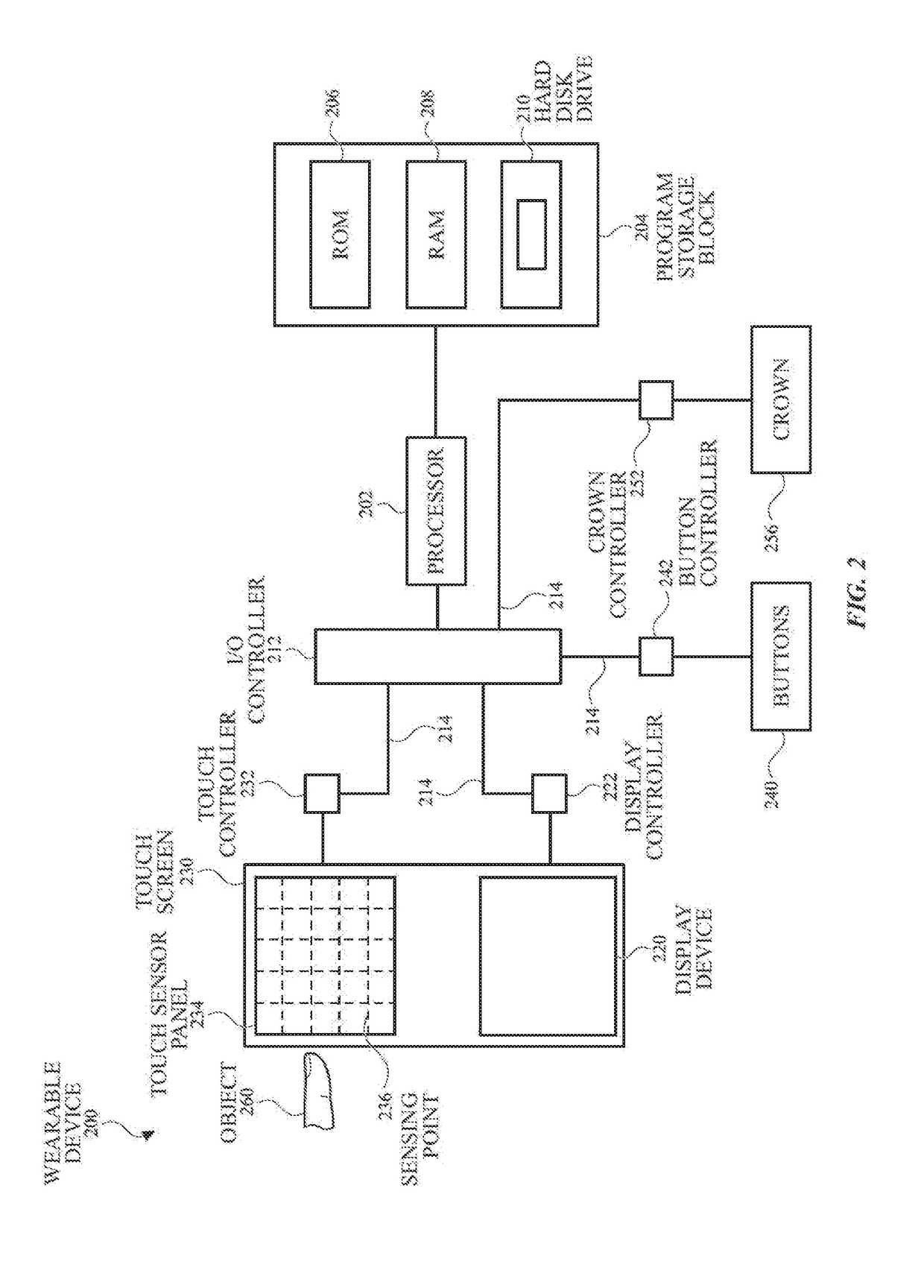Systems and apparatus for object detection
a technology of object detection and system, applied in the field of user input, can solve the problem that devices in these configurations cannot detect objects that can modulate capacitan
- Summary
- Abstract
- Description
- Claims
- Application Information
AI Technical Summary
Benefits of technology
Problems solved by technology
Method used
Image
Examples
Embodiment Construction
[0093]In the following description of the disclosure and examples, reference is made to the accompanying drawings in which it is shown by way of illustration specific examples that can be practiced. It is to be understood that other examples can be practiced and structural changes can be made without departing from the scope of the disclosure.
[0094]FIG. 1 illustrates exemplary personal electronic device 100 including a crown according to examples of the disclosure. In the illustrated example, device 100 is a watch that generally includes housing 102 and strap 104 for affixing device 100 to the housing of a user. That is, device 100 is a wearable device. Housing 102 can be designed to couple to straps 104. Device 100 can have touch-sensitive display screen 106 (hereafter display) and crown 108. Device 100 can also have buttons 112 and 114. Though device 100 is illustrated as a watch, it is understood that the examples of the disclosure can be implemented in devices other than watches...
PUM
 Login to View More
Login to View More Abstract
Description
Claims
Application Information
 Login to View More
Login to View More - R&D
- Intellectual Property
- Life Sciences
- Materials
- Tech Scout
- Unparalleled Data Quality
- Higher Quality Content
- 60% Fewer Hallucinations
Browse by: Latest US Patents, China's latest patents, Technical Efficacy Thesaurus, Application Domain, Technology Topic, Popular Technical Reports.
© 2025 PatSnap. All rights reserved.Legal|Privacy policy|Modern Slavery Act Transparency Statement|Sitemap|About US| Contact US: help@patsnap.com



